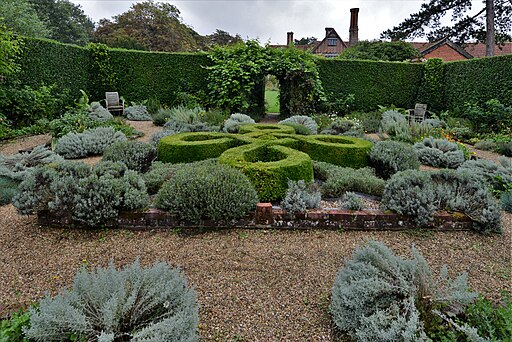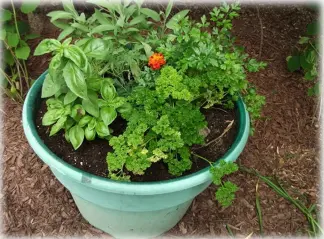Your cart is currently empty!
Gardening for Birds: Planting for Black-capped Chickadees
Learn how to attract black-capped chickadees to your garden by planting native trees and flowers that provide food and nesting spaces.
Your cart is currently empty!
Nothing brings taste and freshness to your meals and to your senses like fresh herbs. The scent that greets you as you walk past bushes of lavender or rub the top leaves of basil adds a further level to the joy of gardening. These plants are delicious when fresh from the garden and can be dried or frozen for future enjoyment.
Herbs have been an important part of the garden for hundreds of years. According to historical accounts, herbs were grown in pharmacy gardens. Monks researched these herbs to learn about their uses. The study of the medical use of herbs continues to this day in non-traditional medicine.
Most of the herbs we use today in our cooking were first used medicinally. Sage, for example, is an important medicinal herb that adds a wonderful flavour to chicken and other main dishes. Make a sage tea with fresh or dried sage leaves and add local honey. I have found that this helps with the symptoms of a cold or flu.
Another herb, lavender, when added to sugar gives an interesting taste to pastry, while its sweet smell can ease stress. The parsley that is used in cooking can prevent flatulence and bad breath. The possibilities for using herbs are endless.
Growing herbs in amongst the flowers adds extra excitement to your garden. A hedge of lavender or lemon thyme brings in a variety of pollinators that will also visit your flowers and vegetables. If you are blessed with a hot area that has poor soil, an herb garden will bring you great satisfaction. Many of the woody herbs, such as sage, rosemary, thyme, and lavender, will thrive in less than perfect conditions. Herb gardens can be swaths of plants running one into another, or they can be highly structured, like Victorian knot gardens.

Another way to enjoy fresh herbs all summer long is by growing them in a pot or planter. Containers are wonderful alternatives for those who do not have the space for a large garden. Try putting a planter beside the barbeque this summer. A large half-barrel of herbs such as basil, thyme, rosemary, sage, and parsley will add flavour to all of your summer recipes. Add a few nasturtiums as well as the peppery leaves and flowers enhance a summer salad.

I always add a French marigold to the planter as it brings in many beneficial insects and the scent tends to discourage squirrels.
If you have a sunny window, why not try a few herbs through the winter? Chives are well suited to indoors, as well as with rosemary and thyme. If you have a plant stand or an area with a grow light, you have even more opportunities to experiment with growing fresh herbs all winter long.
Many herbs are well suited for drying and are easy to store for use in the winter. If you are drying herbs, make sure they are totally dry and the container is dry. Otherwise, you risk them going moldy. I like to make pesto with my basil and freeze it in ice cube trays. Once it is frozen, I pop the cubes into a freezer bag. A cube of pesto in a soup or stew adds a glorious flavour. Fresh, dried, and frozen herbs can add flavour to your cooking and happiness to your senses.
Learn how to attract black-capped chickadees to your garden by planting native trees and flowers that provide food and nesting spaces.
Starting seeds, the first thing that you should see is a pair of leaves. These are seed leaves and almost every seed will start out this way.
Create a beautiful mini formal garden inspired by Japanese bonsai gardens with Espoma’s organic potting mix. Learn how to protect your garden from the elements and add miniature pieces. Enjoy the relaxed and formal look with the succulent hedge and gates!
Learn more about Lydia Wong's bee cocoon study and discover how to plant peas from seed in this weekend gardening article! Lydia was amazed by the garden, check out the double bloodroots, bee cocoons, and more! Enjoy the wonders of early spring as you grow and pot up your pea plants with a greenhouse and compost/garden soil mixture for safety and success!
Saucer Magnolia is probably the best known and most widely planted variety in the Ottawa area, so named for its giant saucers.
The autumn fire variety features rich, rosy-pick flowers which slowly age throughout the season, eventually turning a coppery red color.
GardeningCalendar.ca gets some funding from advertisers. If you click on links and advertisements at no cost to you, the site may receive a small commission that helps fund its operation.
© 2025 J&S Calendars Ltd.
Leave a Reply
You must be logged in to post a comment.